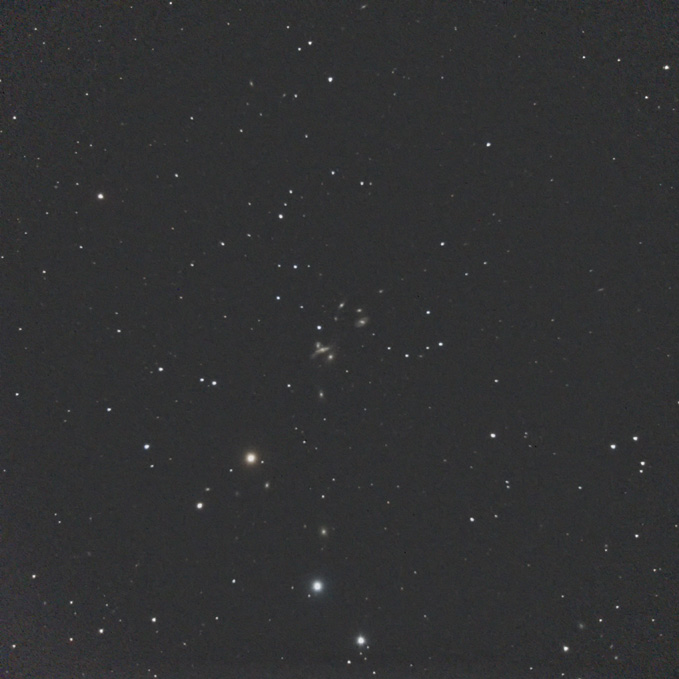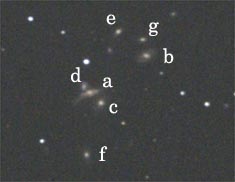| NGC | Hickson | R.A. | Dec. | Size | Mag. |
|---|
| 3753 | 57a | 11h 37m 53.8s | +21°58' 51" | 1.7×0.5' | 13.6 |
| 3746 | 57b | 11h 37m 43.6s | +22°00' 34" | 1.1×0.5' | 14.2 |
| 3750 | 57c | 11h 37m 51.8s | +21°58' 26" | 0.8×0.7' | 13.9 |
| 3754 | 57d | 11h 37m 55.1s | +21°59' 09" | 0.4×0.3' | 14.3 |
| 3748 | 57e | 11h 37m 49.2s | +22°01' 33" | 0.7×0.4' | 14.8 |
| 3751 | 57f | 11h 37m 54.1s | +21°56' 10" | 0.8×0.5' | 13.9 |
| 3745 | 57g | 11h 37m 44.6s | +22°01' 15" | 0.4×0.2' | 15.2 |
At around the tail of Leo, about 8 degrees NW from Denebola, there is a small-scaled galactic group.
It contains seven major member galaxies with 14 or 15th magnitude, the group is called "Copeland's Septet" because Ralph Copeland discovered the group in 1874.
The group is only 5 arc minutes in span, it's difficult to detect individual galaxies through large-sized telescopes.
The group is one of compact galactic groups distributed in heavens, has a number of 57 of Hickson's compact groups.
The distance is estimated about 480 millions light years.
|


